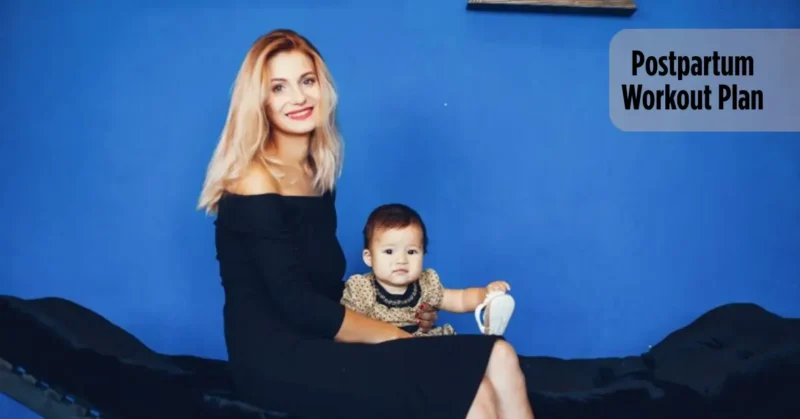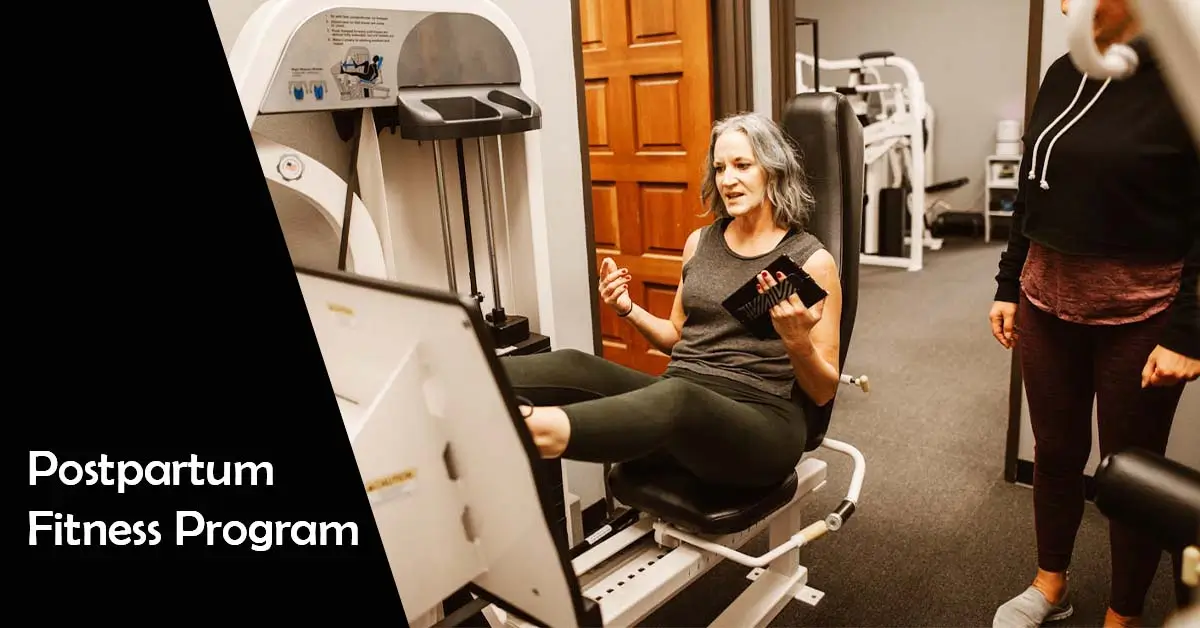Learn the top Postpartum Fitness Program to safely rebuild strength and energy after childbirth. Explore expert-approved Postpartum workout plans designed for real moms to get back in shape with confidence.
Thank you for reading this post, don't forget to subscribe!How to Choose the Best Postpartum Fitness Program and Workout Plan to Get Back in Shape
After childbirth, your body needs special care and attention to regain strength, flexibility, and endurance. A well-structured postpartum workout plan will help you transition back into physical activity, focusing on core recovery, pelvic floor strengthening, and gradually improving your overall fitness. This guide will outline a safe and effective postpartum workout routine that balances strength and cardio while prioritizing recovery.
Bringing a new life into the world is a beautiful journey—but it also takes a toll on your body. As the joy of motherhood sets in, many women find themselves wondering how to feel strong, energized, and confident again.
That’s where a structured Postpartum Fitness Program can make all the difference. With the right Postpartum workout plan, you can safely rebuild your strength, improve your mood, and regain your pre-pregnancy form—without putting unnecessary pressure on your healing body. In this guide, we’ll explore the best fitness options tailored specifically for new moms, helping you find a plan that works with your lifestyle, schedule, and recovery needs.
The Importance of Postpartum Exercise
The postpartum period is a time of healing and transformation. A proper workout routine accelerates physical recovery, boosts mental well-being, combats postpartum depression, and improves sleep. Starting light and progressing slowly is essential to avoid injury and enhance long-term fitness.
When to Start Postpartum Workouts
Before beginning any postpartum exercise, consult with your healthcare provider, especially if you had a cesarean section or complications during delivery. Most women can begin light activities like walking and pelvic floor exercises within a few days after a vaginal delivery. However, waiting until at least six weeks postpartum or when cleared by your doctor is recommended for more structured training.
Key Components of a Postpartum Workout Plan

Pelvic Floor and Core Rehabilitation
One of the primary areas affected during pregnancy and childbirth is the core, particularly the pelvic floor muscles. It’s crucial to start with exercises that restore core function and strengthen the pelvic floor to prevent diastasis recti and urinary incontinence.
Pelvic Floor Exercises (Kegels)
Kegels are an essential exercise for rebuilding the pelvic floor. Start by contracting the muscles you would use to stop urine flow. Hold for 5-10 seconds and then release. Repeat 10-15 times, 3-4 times a day.
Diaphragmatic Breathing
Diaphragmatic breathing helps reconnect the core muscles and promotes relaxation. Breathe deeply into your belly, expanding your diaphragm, and exhale slowly. Practice this for 5-10 minutes daily to reduce tension and improve core stability.
Bridge
The bridge is a gentle yet effective way to strengthen your glutes and pelvic floor. Lying on your back with knees bent and feet flat on the ground, lift your hips towards the ceiling, squeezing your glutes at the top. Hold for a few seconds and lower. Repeat 10-15 times.
Lower Body Strengthening
Pregnancy places extra pressure on the lower body, particularly the hips and legs. Strengthening these muscles is crucial for stability and endurance.
Squats
Squats target the glutes, quadriceps, and hamstrings. Stand with your feet shoulder-width apart, lower your body into a squat position, keeping your chest lifted and knees aligned over your toes. Perform 10-15 repetitions, gradually increasing as you gain strength.
Lunges
Lunges are excellent for building lower body strength and balance. Step one foot forward and lower your body until both knees are at 90-degree angles. Push back to the starting position and repeat with the other leg. Perform ten reps on each side.
Upper Body Strengthening
Caring for a newborn involves frequent lifting and carrying, so building upper body strength is essential to support daily activities.
Push-ups (Modified)
Start with modified push-ups, either on your knees or against a wall. Focus on engaging your core and maintaining proper form. Perform 8-12 reps, gradually progressing to full push-ups as you regain strength.
Resistance Band Rows
Secure a resistance band around a sturdy object and hold both ends. Pull the band towards you, squeezing your shoulder blades together. Perform 10-12 reps, focusing on posture and control.
Cardiovascular Fitness
Low-impact cardio exercises are essential for improving endurance and supporting overall health.
Walking
Walking is one of the easiest and safest forms of cardio postpartum. Start with short, gentle walks and gradually increase your pace and duration as your fitness improves.
Swimming
Swimming is a low-impact cardio exercise that provides a full-body workout. It helps build cardiovascular endurance while being gentle on the joints.
Flexibility and Mobility
Restoring flexibility is crucial for improving overall mobility and preventing injury.
Child’s Pose
Child’s Pose is a gentle stretch for the lower back and hips. Start on your hands and knees, then sit back on your heels while reaching your arms forward. Hold for 20-30 seconds and repeat.
Cat-Cow Stretch
This dynamic stretch helps relieve tension in the spine and improves flexibility. Start on all fours and alternate between arching your back (Cat) and dipping it (Cow) for 10-15 repetitions.
Suggested Weekly Postpartum Workout Plan
| Day | Workout Focus | Details |
|---|---|---|
| Monday | Core & Pelvic Floor Activation | 15–20 min of breathing, pelvic tilts, and deep core engagement exercises |
| Tuesday | Low-Impact Cardio + Stretching | 20–30 min brisk walk or light stationary bike + full-body stretching |
| Wednesday | Upper Body Strength (Bodyweight) | Wall push-ups, light dumbbell rows, resistance band arm work (20 min) |
| Thursday | Rest or Gentle Yoga | 20 min gentle postpartum yoga or simply rest and hydrate |
| Friday | Lower Body Strength & Stability | Glute bridges, squats to a chair, step-ups (3 sets of 10 each) |
| Saturday | Full Body Functional Movement | Babywearing workout or stroller walk + 10 min of strength circuits |
| Sunday | Active Recovery & Mindfulness | Gentle walk, guided meditation, or a short mobility/stretch session |
Notes:
- Always warm up for 5 minutes before and cool down after each session.
- This plan is flexible—listen to your body and adjust as needed.
- Focus on form, breathing, and avoiding any discomfort, especially in the abdomen or joints.
FAQs
Q. What is the best postpartum workout program?
The best postpartum workout program focuses on gradually rebuilding strength, improving flexibility, and enhancing core stability while being mindful of the body’s healing process. Programs often include low-impact exercises like pelvic floor exercises, gentle yoga, and light strength training, progressing as the body recovers. Consulting a healthcare provider before starting is recommended.
Q. What are the best postpartum exercises for the tummy?
Postpartum exercises for the tummy typically include gentle core-strengthening movements like pelvic tilts, diaphragmatic breathing, and modified planks. You can introduce exercises like bridges and leg lifts as your strength increases. Always prioritize exercises that focus on healing your abdominal muscles, especially if you’ve experienced diastasis recti.
Q. What are the types of postnatal exercises?
Types of postnatal exercises include:
- Pelvic floor exercises (Kegels) to strengthen the pelvic area.
- Core exercises to rebuild abdominal strength.
- Cardio exercises like walking or swimming are for general fitness.
- Strength training improves overall body strength.
- Stretching and flexibility exercises like yoga improve mobility and relaxation.
Q. What is a postpartum workout plan at home?
A postpartum workout plan at home typically starts with gentle pelvic floor exercises, walking, and breathing techniques. Gradually, you can include bodyweight exercises like squats, lunges, bridges, and gentle core work. The plan should focus on strengthening the body while being mindful of your recovery, gradually building intensity over time.
Q. When should I start postpartum exercises to reduce my tummy?
Once you get clearance from your healthcare provider, you can typically start gentle postpartum exercises to reduce tummy size about 6 weeks after delivery. Begin with low-impact exercises that target core stability, such as pelvic tilts and breathing exercises, and gradually introduce more intense abdominal workouts as your strength improves.
Read more articles about Health & Wellness Tips.
You might like:

